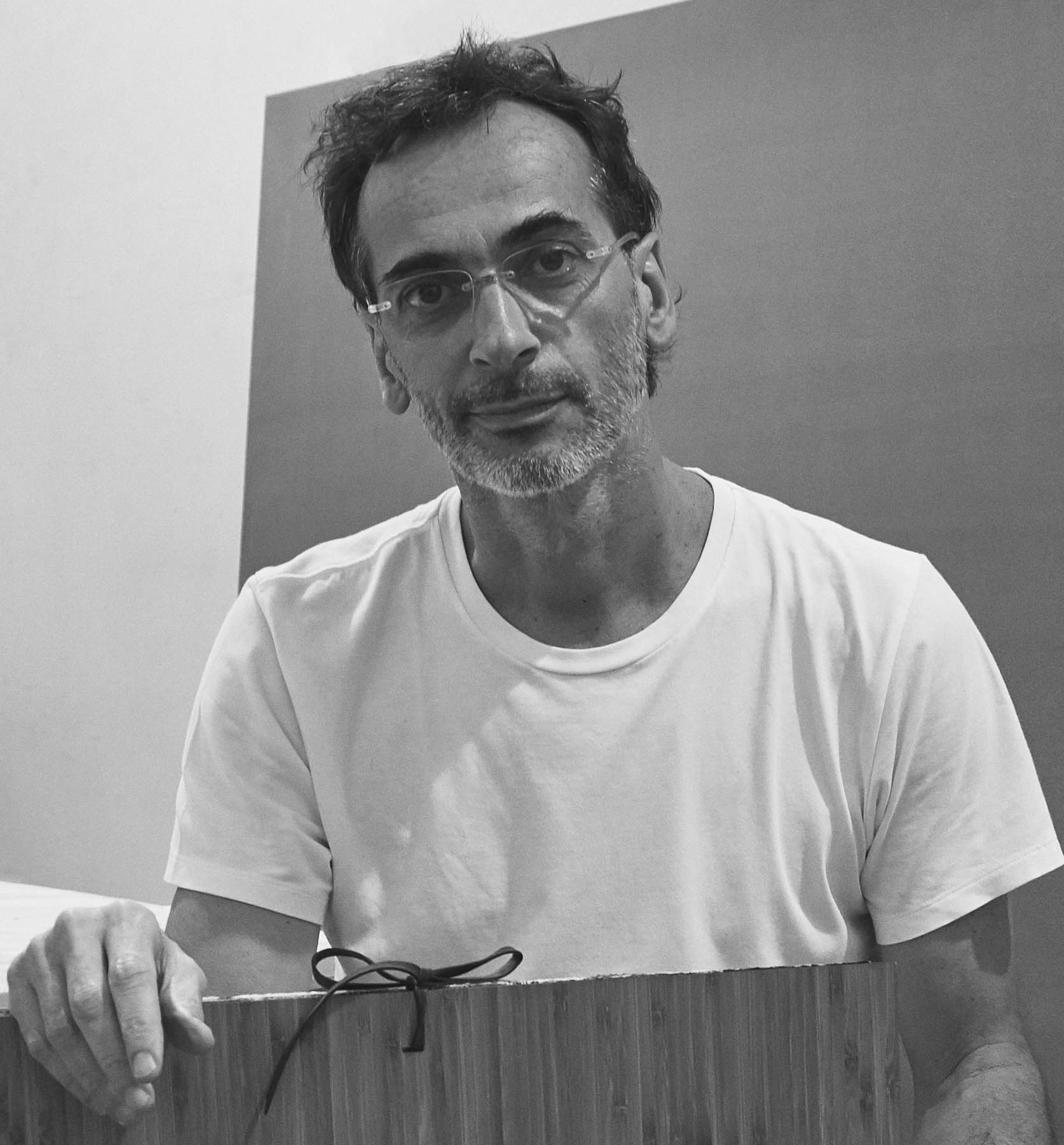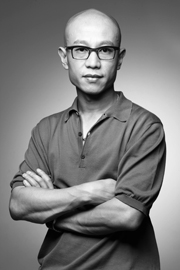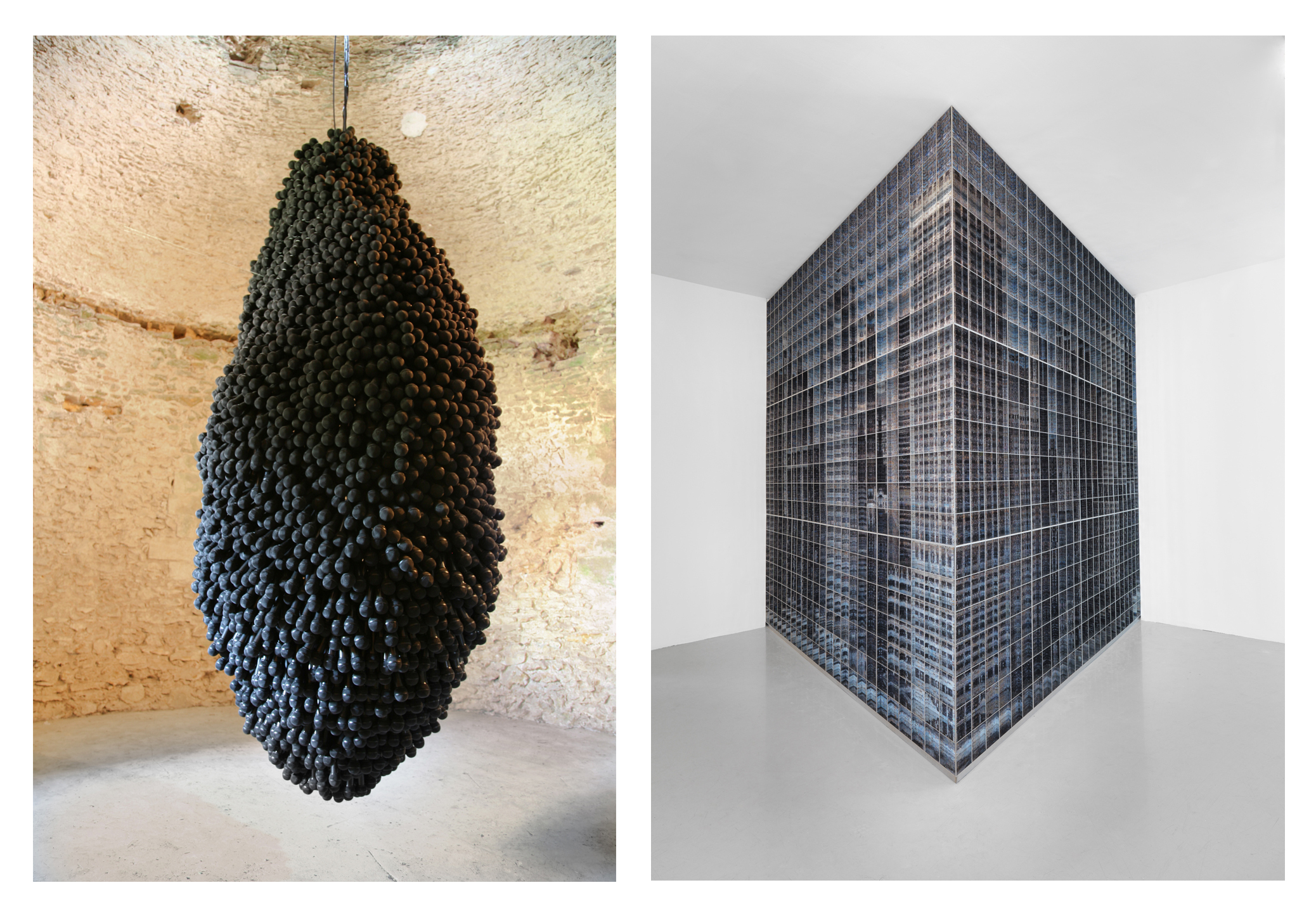Artist spotlight: Sigalit Landau
08.10.2014—
Following the acquisition of two more works from her recent exhibition 'Knafeh' at Marlborough Contemporary and her forthcoming solo exhibition 'Phoenician Sand Dance' at Museu d'Art Contemporani de Barcelona, it is only fitting to spotlight Sigalit Landau, whom we've been collecting since 2011.
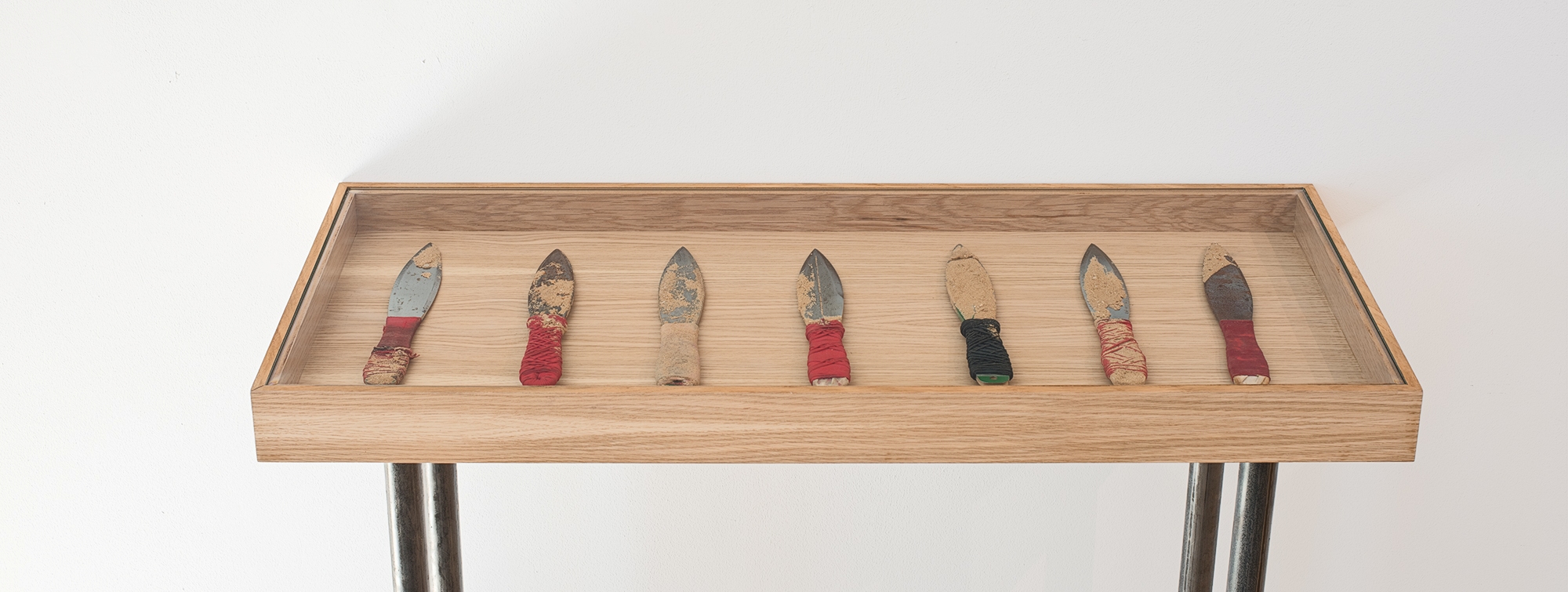 Sigalit Landau, 'Knives of Azeklon', 2011
Sigalit Landau, 'Knives of Azeklon', 2011
Sigalit Landau is a self-stylized citizen of the world whose art seeks to universalize her native country of Israel. Born in Jerusalem in 1969, Landau grew up in a bilingual, multicultural family, living in Philadelphia, London and various cities within Israel. As a visual artist accustomed to international living, Landau sees her work as a catalyst for connections, linking past and future, the private and the public, and her homeland to the rest of the world. Landau draws on a variety of media including sculpture, video and installation to explore themes of the body, memory and transition in an often cathartic mode. Her artistic practice allows Landau to address taboo subjects in the present day identity of Israel which is so dependent on its history and anchored in a boiling struggle with its physical environment. Landau mediates her oblique references to Israeli politics with the use of her own body in her performance art – work that proposes a construction of identity and tradition.
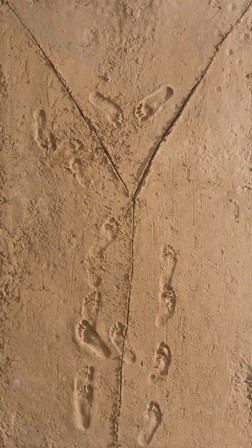
Landau’s current exhibition ‘Knafeh’, at Marlborough Contemporary in London, refers to her new video work demonstrating the almost painterly art of making knafeh – an Arabic sweetmeat that is loved throughout the Middle East. The exhibition also includes a new series of ‘sand works’, that relate to the three works already in the Tiroche DeLeon Collection: ‘Azkelon’, 2011, ‘Salt Crystal Fishing Net’, 2011 and ‘Phoenician Sand Dance’, 2005.
Sand Flag’, 2013 – one of our new acquisitions – relates specifically to ‘Azkelon’ which was exhibited at the 2011 Venice Biennale. In this powerful video children are playing the ‘knife’ game - a very popular children's game in the region duringthe 1960s and 1970s - whereby participants use a knife to 'conquer' sections of sand/land/territory from the opponent. The title, a hybrid of Gaza (Aza in Hebrew) and Ashkelon, refers to two towns that almost share a beach, yet are separated by a border. Our second acquisition,‘Knives of Azkelon’, 2011 displays the actual knives used in the video. These are presented in an oak vitrine in the manner of a museological display. The new sand works, of which ‘Sand Flag’ is the most substantial, resonate both as painting and sculpture. Made of a mixture of sand and bonding materials, the sand works become permanent markers of those fleeting gestures of play on the beach, while resembling the mark-making of painterly abstraction. Clearly rooted in their location, like many of Landau’s works, they take simple and immediate materials from her surroundings. Inevitably political, ‘Sand Flag’ is also a nod towards the persistence of the flag in art history, as both potent symbol and formal structure, from Jasper Johns onwards.
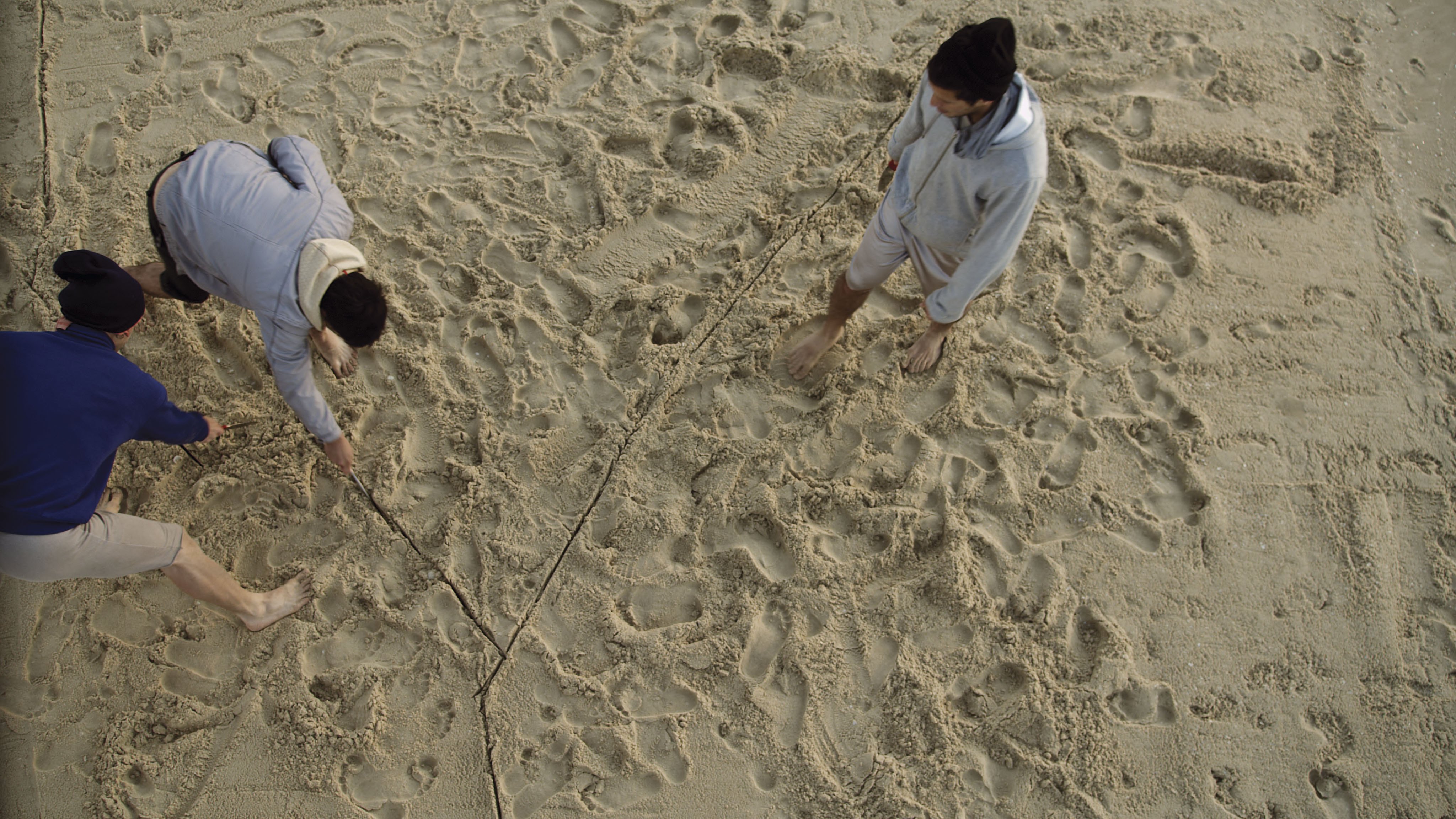 Sigalit Landau, 'Azkelon', 2011
Sigalit Landau, 'Azkelon', 2011
This November, ‘Phoenician Sand Dance’ - an exhibition of Landau’s video works - will be on view at the Museu d’Art Contemporani de Barcelona. Our work ‘Phoenician Sand Dance’, 2005, which shares its name with the forthcoming exhibition, features the artist and a colleague on the seashore in a looped video sequence where each scoops out sand in a line proceeding towards the other along what appears to be a giant helix or figure-eight. The paths of the two are seen mostly in silhouette against the light, resembling figures on early frescoes and vase paintings from the Aegean and Eastern Mediterranean regions, evoking the history of the region. The exhibition in Barcelona focuses on such videos in which Landau makes sculpture through the interaction of living bodies. By exhibiting both the sublime and sinister aspects of these bodies, the artist puts us in mind of corporeality as a membrane, as an instrument of trade, production and authentic vital subjectivity.
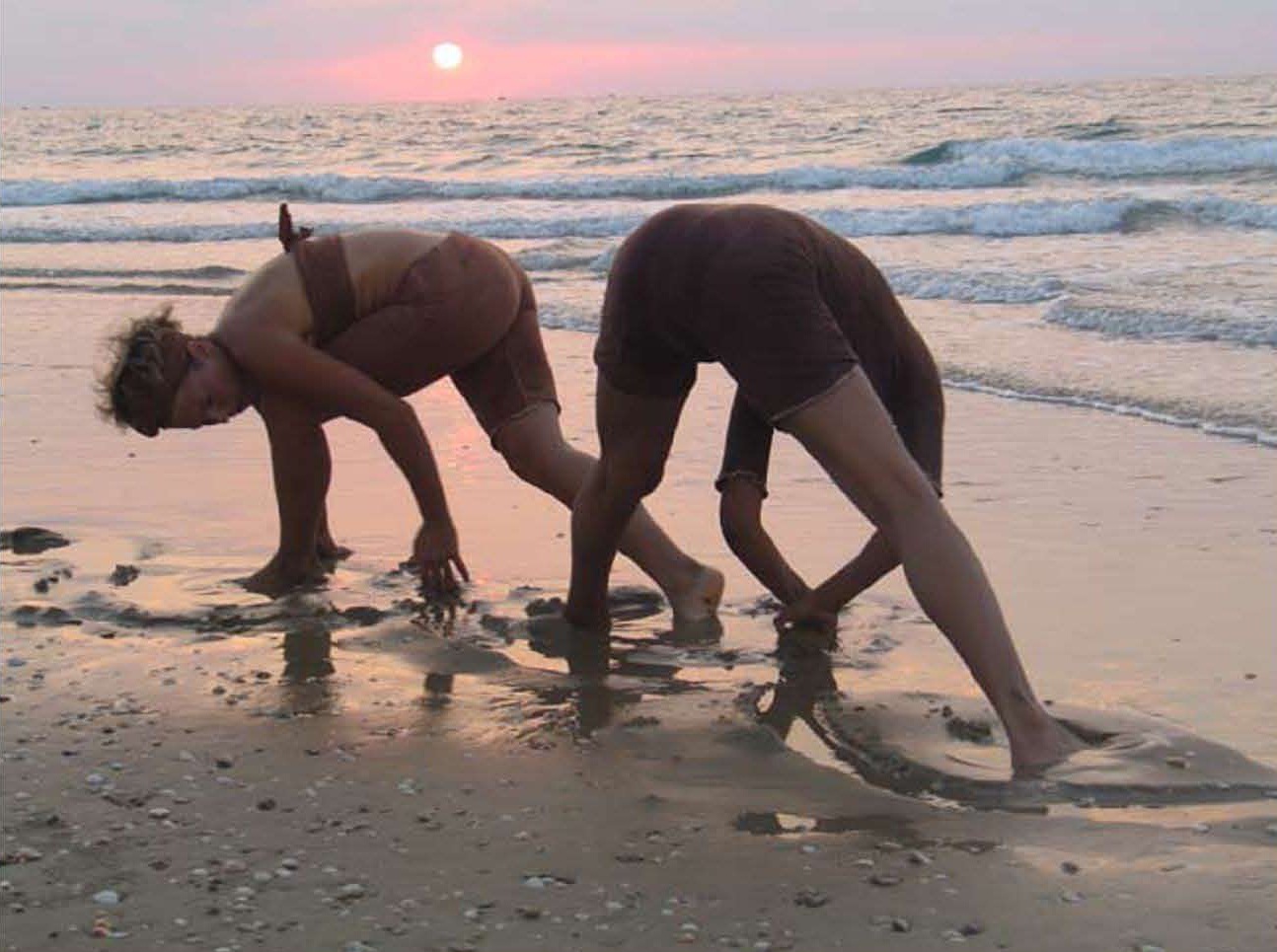 Sigalit Landau, 'Phoenician Sand Dance', 2005
Sigalit Landau, 'Phoenician Sand Dance', 2005
Landau has achieved international acclaim for her work, twice representing Israel (1997 and 2011) at the Venice Biennale. She has featured in numerous exhibitions and museums such as Documenta X in 1997 and MoMA, New York in 2008. Her work is found in many major museum collections including MoMA and Centre Pompidou.
For more information visit Sigalit Landau's artist page.
news archive
Artist Spotlight: Luiz Zerbini
March 27, 2017—One of the most respected contemporary artists in Latin America, Luiz Zerbini produces paintings, sculptures, and installations that daringly combine geometric abstraction and figuration.
Read More »Artist spotlight: Liu Wei
March 26, 2014—Having recently acquired a 3rd work by Liu Wei, we dedicate a spotlight to one of China’s most revered contemporary artists.
Read More »Spotlight on India
Jan. 7, 2015—Following a weak period for the Indian contemporary art market, signs of recovery are emerging.
Read More »
